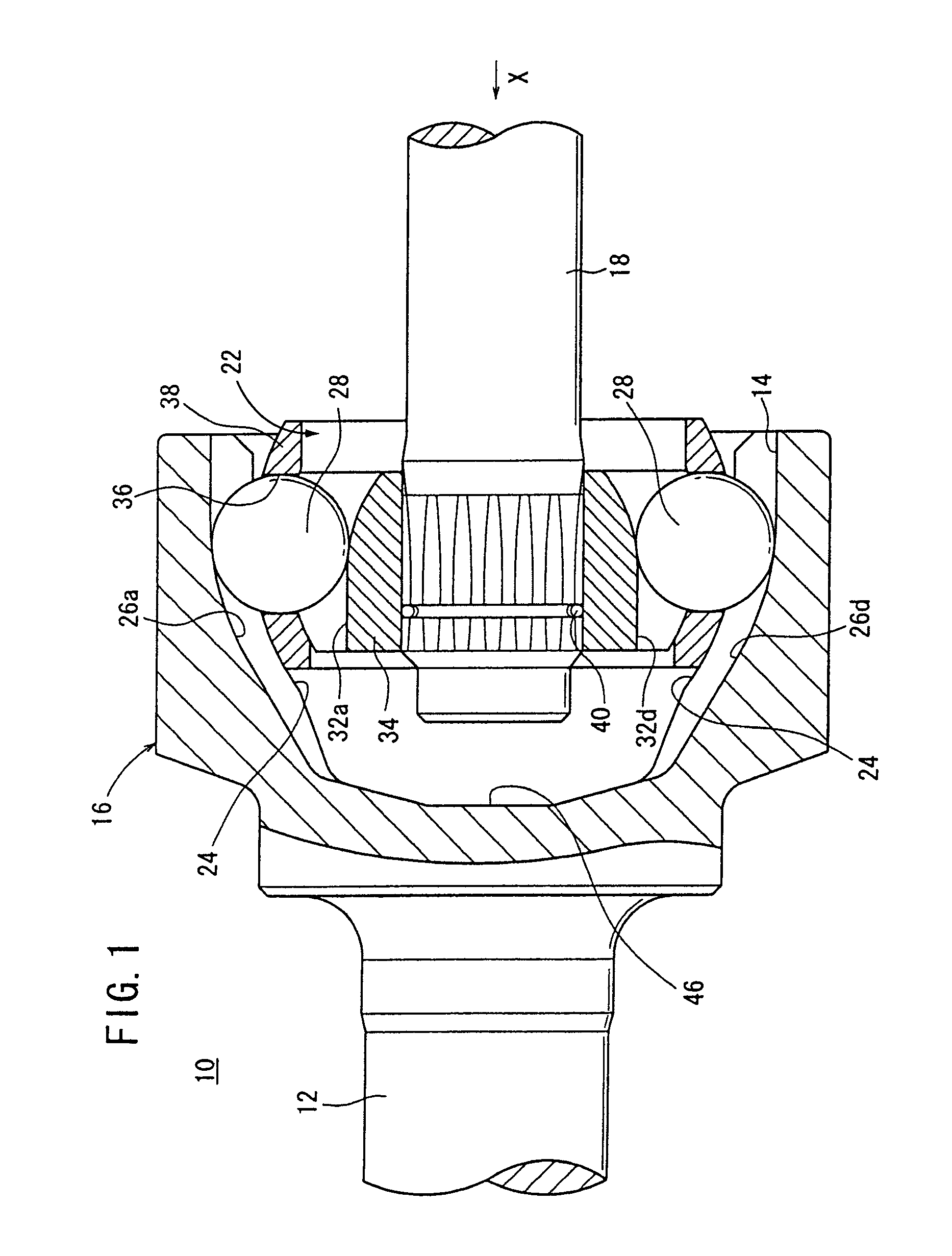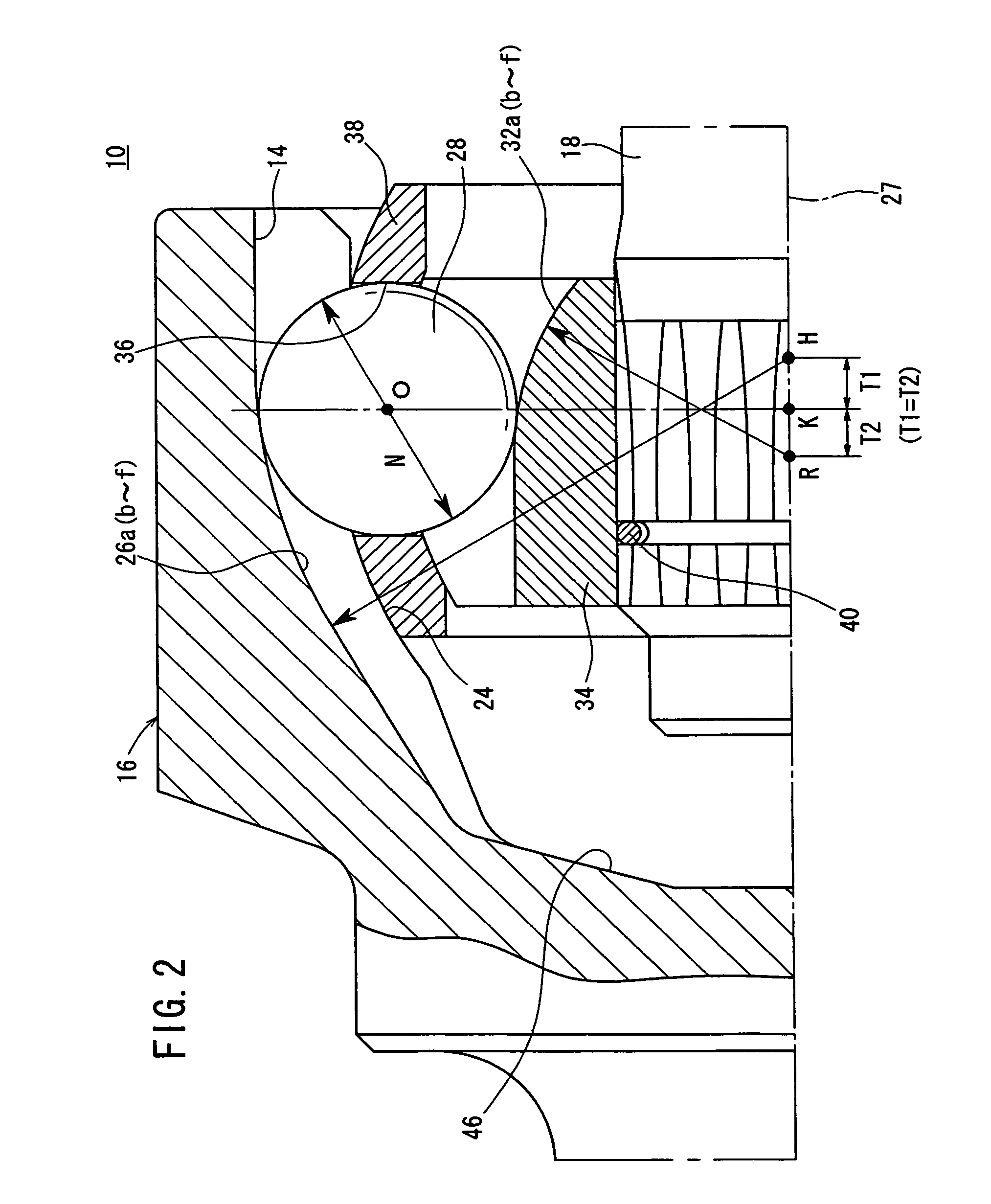Constant velocity joint
a constant velocity, joint technology, applied in the direction of yielding couplings, rotary machine parts, couplings, etc., can solve the problems of reducing the durability of the outer member b>1/b>, reducing the durability of the outer member, and being highly costly to manufacture, so as to achieve surface pressure acting and increase durability
- Summary
- Abstract
- Description
- Claims
- Application Information
AI Technical Summary
Benefits of technology
Problems solved by technology
Method used
Image
Examples
Embodiment Construction
[0078]FIG. 1 shows a constant-velocity joint 10 according to an embodiment of the present invention. In the description which follows, a longitudinal cross section refers to a cross section along the axial direction of a first shaft 12 and a second shaft 18, and a transverse cross section to a cross section perpendicular to the axial direction.
[0079]The constant-velocity joint 10 is basically constructed of a bottomed cylindrical outer cup (outer member) 16 integrally joined to an end of a first shaft 12 and having an opening 14 that opens away from the first shaft 12, and an inner member 22 fixed to an end of a second shaft 18 and housed in the outer cup 16.
[0080]As shown in FIGS. 1 and 3, the outer cup 16 has a spherical inside-diameter surface 24 on its inner wall. The inside-diameter surface 24 has six first guide grooves 26a through 26f extending in the axial direction and angularly spaced at 60-degree intervals around the axis thereof.
[0081]As shown in FIG. 2, the first guide ...
PUM
 Login to View More
Login to View More Abstract
Description
Claims
Application Information
 Login to View More
Login to View More - R&D
- Intellectual Property
- Life Sciences
- Materials
- Tech Scout
- Unparalleled Data Quality
- Higher Quality Content
- 60% Fewer Hallucinations
Browse by: Latest US Patents, China's latest patents, Technical Efficacy Thesaurus, Application Domain, Technology Topic, Popular Technical Reports.
© 2025 PatSnap. All rights reserved.Legal|Privacy policy|Modern Slavery Act Transparency Statement|Sitemap|About US| Contact US: help@patsnap.com



